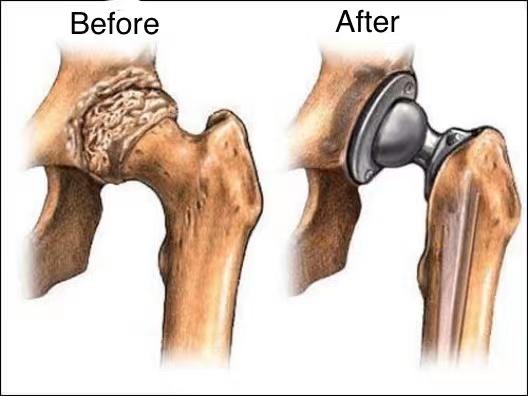Hip replacement
An artificial joint is an artificial organ designed by people to save a joint that has lost its function, thus achieving the purpose of relieving symptoms and improving function. People have designed various artificial joints for many joints according to the characteristics of each joint in the body. Artificial joints are the most effective among artificial organs.
Modern hip replacement surgery began in the 1960s. After half a century of continuous development, it has become an effective method for the treatment of advanced joint diseases. It is known as an important milestone in the history of orthopedics in the twentieth century.
Artificial hip replacement surgery is now a very mature technology. For those advanced arthritis ineffective or ineffective conservative treatment, especially for hip osteoarthritis in the elderly, surgery can effectively relieve pain and improve hip The function of the joints is completely required for daily life. According to incomplete statistics, there are currently more than 20,000 patients receiving artificial hip replacement in China every year, and the number is gradually increasing, and it has become one of the common orthopaedic surgeries.
1. Indications
Hip osteoarthritis, necrosis of the femoral head, femoral neck fracture, rheumatoid arthritis, traumatic arthritis, developmental dysplasia of the hip, benign and malignant bone tumors, ankylosing spondylitis, etc., as long as there is destruction of the articular surface X-ray signs accompanied by moderate to severe persistent joint pain and dysfunction that cannot be relieved by various non-surgical treatments.
2. Type
(1). Hemiarthroplasty (femoral head replacement): simple replacement of the femoral end of the hip joint, mainly suitable for femoral neck fractures, avascular necrosis of the femoral head, no obvious damage to the acetabular articular surface, and old age cannot tolerate total hip replacement of patients.
(2). Total hip replacement: artificial replacement of the acetabulum and femoral head at the same time, mainly suitable for patients with hip arthritis and ankylosing spondylitis.
3. Postoperative Rehabilitation
(1). The first day after surgery: muscle strength exercise of the affected limb
(2). The second day after the operation: remove the wound and drain the wound, exercise the muscle strength of the affected limb and exercise the joint function at the same time, and strictly prohibit the hip joint adduction and internal rotation, excessive hip flexion and other actions to prevent the dislocation of the replacement prosthesis.
(3). On the third day after the operation: exercise the muscle strength and joint function of the head of the bed at the same time, and exercise with weight-bearing walking on the ground. Most of the patients reach the discharge standard.
(4). Remove the sutures two weeks after the operation and continue to perform functional exercises. Generally, the daily life level is reached within one month.
